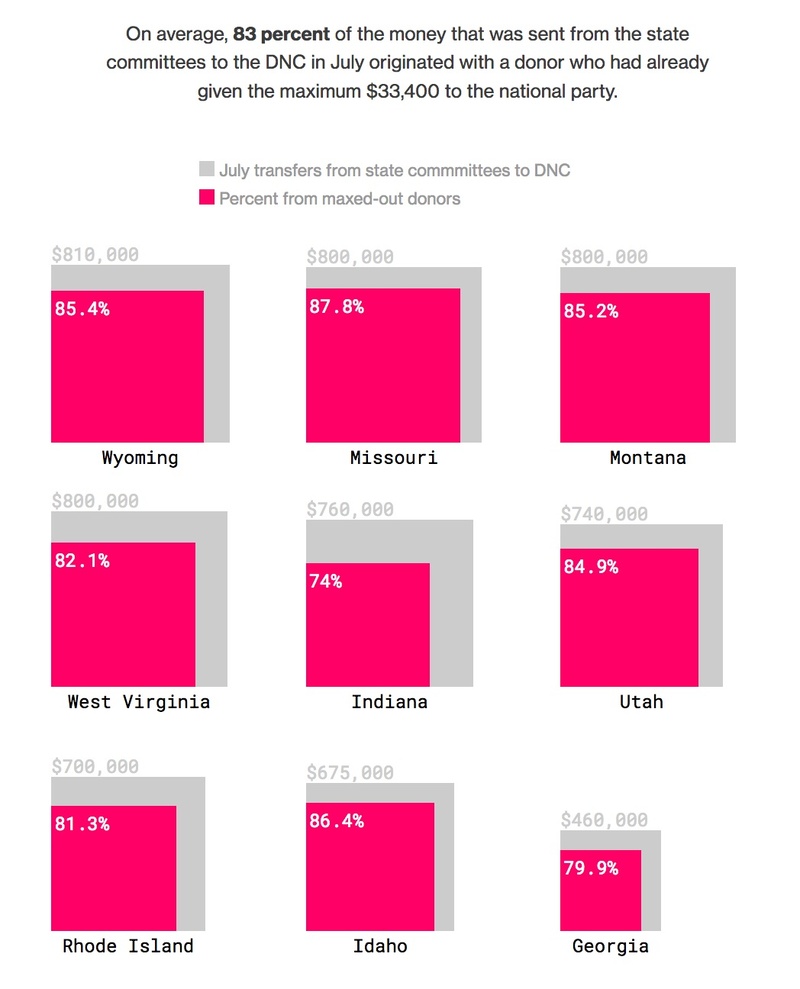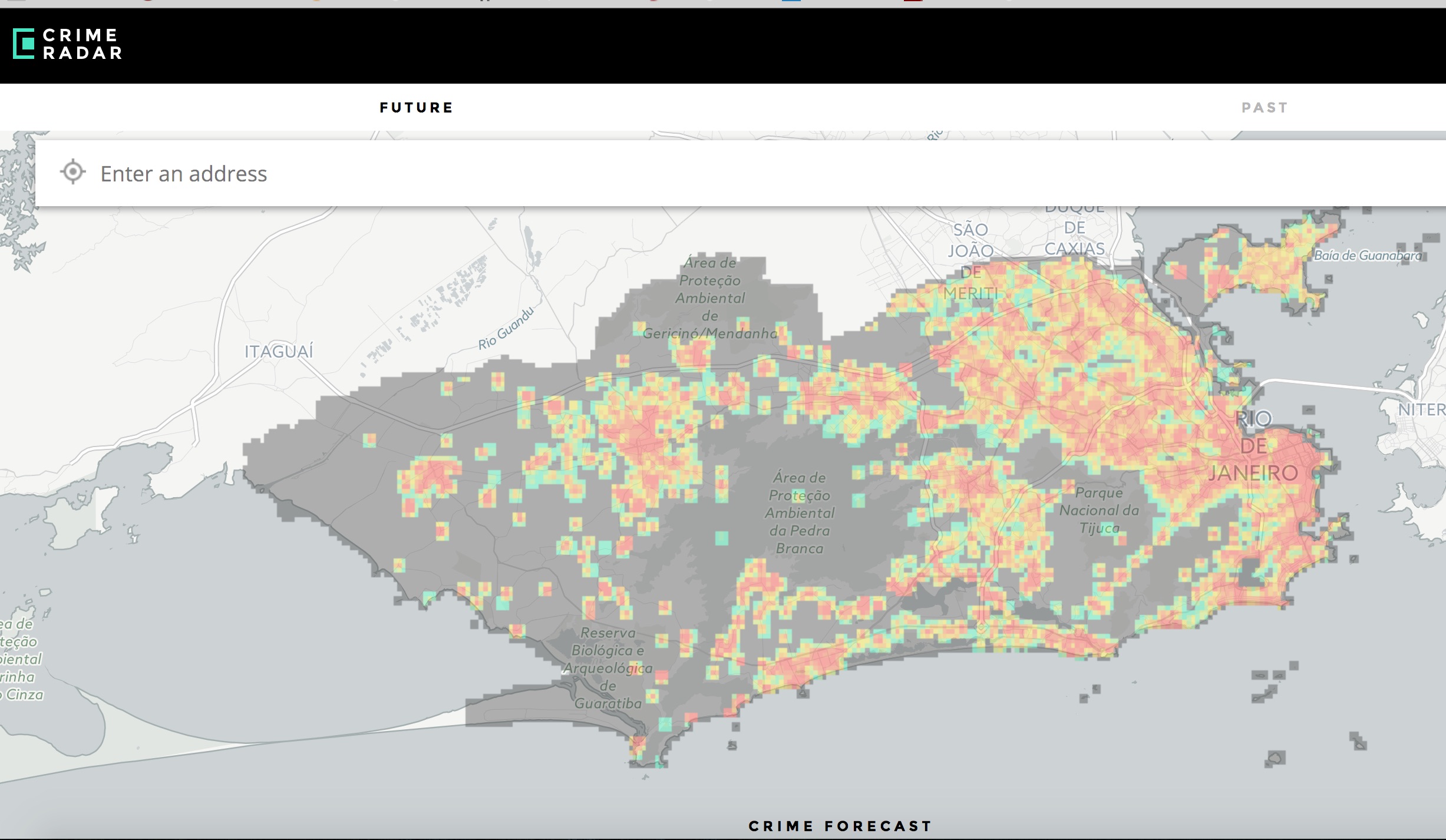Today in OpenGov: Computing the real FOIA disclosure rate, OpenGov lightning talks, Our Revolution may not be disclosed
RUN THOSE NUMBERS AGAIN? An independent assessment found that the federal agency release rate for Freedom of Information Act requests appears to be much lower than the 91% claimed by the Justice Department and touted by the White House. Tom Susman: “If you include full and partial releases as constituting the total release rate, the ratio for all agencies in FY 2015 is 90.6 percent. …That total release rate is not included as part of the FOIA data, but it has been added to the spreadsheet as the last column (highlighted in blue) by adding the released in full and released in part ratios. If you look at the rates separately, for all agencies in FY 2015, the released in full ratio is 51.84 percent and the released in part ratio is 38.76 percent.” [READ MORE]
OPACITY: A new group called Our Revolution, launched this week to try to continue the movement that the Bernie Sanders campaign began through fundraising and spending to support “candidates in lockstep with Sanders’ ideals.” Jeff Weaver, the group’s leader and former campaign manager for Sanders’ presidential campaign, says they’re going to rely on small donors. As Libby Watson reports, however, “without releasing the identities of contributors, it’s hard for the public to know whether that really is true. A group that decries the influence of money in politics should know that donor disclosure matters. Even as a 501(c)(4), Our Revolution could set an example for other nonprofits that spend on elections and choose to reveal this crucial information. Without doing that, it’s just another dark money group.” [READ MORE]
GOOD, BAD & UGLY: On Tuesday, the Sunlight Foundation joined representatives from eight other open government advocacy organizations and more than a dozen federal agencies in Washington at the National Archives for a series of lightning talks focused on the next round of open government plans. As we highlighted in July, long-awaited White House guidance set a deadline of Sept. 16, 2016, for agencies to answer a series of questions about their progress since President Barack Obama issued his Open Government Directive and publish the next plans mandated by his 2009 executive order. What we heard at the National Archives on Tuesday inspired both hope and concern. [READ MORE]
CAMPAIGN 2016

- Millions of donations from maxed-out donors are flowing from state committees to the Democratic National Committee, reports Sunlight Foundation alumnus Bill Allison. [Bloomberg]
- Speaking of donations, 27 of the 40 registered lobbyists who have bundled contributions for the 2016 Clinton presidential campaign have either donated to the Clinton Foundation or work at a firm that has donated. [Washington Examiner]
- The public is largely relying on journalists for information about the presidential transition. Mark Lander:
“On Thursday, both campaigns met with the White House chief of staff, Denis McDonough, and other senior officials to discuss how the Obama administration planned to handle the transition. Gov. Chris Christie of New Jersey, the head of Mr. Trump’s transition team, represented the Trump campaign, while Ken Salazar, a former interior secretary under Mr. Obama, represented the Clinton campaign. Mr. Salazar is the chairman of what the campaign calls the Clinton-Kaine Transition Project. Neither campaign is eager to discuss the process in detail for fear of looking presumptuous.” [New York Times]
- Speaking of journalists, regular press conferences are an essential part of the accountability we expect of the President of the United States and the presidential candidates who aspire to the highest office in the country. Sitting down for hundreds of interviews, including in-depth interviews with national reporters on the campaign trail, can and does inform voters about a candidate’s views but it is not a replacement. [NPR News]
- If a candidate for president has no experience in public service, his or her managerial record in industry is relevant to voters. [Politico]
- Trump campaign CEO Steven Bannon is a registered voter at a vacant Florida home. [Guardian]
- Jonah Goldberg argues that access to former Secretary of State Hillary Clinton for Clinton Foundations was itself the favor afforded to them. [National Review]
- That’s an argument that good government groups are coalescing around, as demonstrated by Jeff Stein’s reporting yesterday: “the heart of their complaint was that the foundation’s contributors appear to have gained a greater ability to make their voices heard by Clinton’s State Department by virtue of donating to her husband’s private foundation.
This is why they see the new email disclosures as such a big deal. Talking with top government officials obviously isn’t the same as getting them to do your bidding, but doing so can help structure how they think, whom they turn to for advice, and, ultimately, what they decide to do. And the emails at least strongly suggest that foundation donors had a better opportunity to mold the secretary of state’s worldview than they would have otherwise.” [Vox]
NATIONAL
- Carol Mullins, the associate commissioner for the Office of Technology and Survey Processing at the Bureau of Labor Statistics — the folks who bring you those jobs and unemployment numbers that business reporters cite every couple of weeks — is modernizing and consolidating its technology infrastructure, reports Jason Miller for WFED. Of note: an Application Programming Interface (API) and a data finder:
“We are putting more of our data out there on the BLS public website for whoever wants to use it. The initiatives that have come out recently really haven’t changed our approach. The commissioner is very keen on maximizing the data that is out there and making it easy and available for people to use. We offer it in multiple different formats,” she said. “We’ve always been an organization full of data geeks and data nerds so the recent push to put more data out there and make it accessible is really just welcoming more organizations and agencies into the world that we’ve been in for some time.”
- The U.S. Census Bureau’s CitySDK and Department of Commerce Data Service’s Commerce Data Usability Project are among finalists in the Open Data category of Government Computer News’ Dig IT Awards. [GCN]
- A new report from the Center for New American Security recommends that the Department of Defense invest more in open source software. Good idea! [CNAS]
- Transparency advocacy groups — including Sunlight — are asking Congress to nix proposed exemptions for said Department of Defense. Bad idea! [Federal News Radio]
State and local
- Wisconsin’s high court ruled that judges may take into account algorithms that predict how likely offenders are to commit crimes in the future when they rule on sentencing. Given the demonstrated bias in such algorithms, this is a canonical example of data of public sector software that should be rigorously tested and audited. [Wall Street Journal]
- Maine Governor Paul LePage left an obscenity laced voice mail on a state representative’s voice mail and asked him to make it public. Rep. Drew Gattine obliged. [Porland Press Herald]
- Here’s 5 country technology leadership examples that the editors of StateTech Magazine think are worth following. We’ll circle back in a year and see where they are. [StateTech]
- Apparently dealing with reporters making Freedom of Information requests for over a decade is excellent preparation for being a therapist. [DNA Info]
- Thanks to StateScoop for reporting on tomorrow’s big transcontinental open data event!
A trio of open data advocacy groups are banding together to lead a volunteer effort aimed at creating a comprehensive list of all of the government databases maintained by California’s localities.The Data Foundation, the Electronic Frontier Foundation and the Sunlight Foundation are teaming up to hold the “Great California Database Hunt” on Saturday, coordinating a daylong campaign of volunteers around the country to sift through the inventories of enterprise systems that each local government agency in the state maintains.
INTERNATIONAL
- In Rio de Janiero, the Igarapé Institute is launching CrimeRadar, an online “a map-based application that uses open data to track incidences of crime.” [CityLab]
- An industry group in Australia that represents startups recommended that banks open up their customer data through APIs, enabling more competition and economic growth. Australia’s banks are resisting that idea. [Australia Financial Review]
- Here’s an interesting idea for QR codes: a way to convey patient history in emergency rooms. [QR CodePress]
- A new report by the Centre for Innovation Policy and Governance in Indonesia found a lack of data management skills, cooperation by officials and public awareness are holding bacjk Jakarta’s open data initiatives. [GovInsider]
- Here’s the Open Government Partnership’s roundup of open government in the news over the past week. [OGP]
EVENTS
- The Electronic Frontier Foundation, Sunlight and the Data Foundation are teaming up for the Great California Database Hunt tomorrow! PLEASE RSVP!
- Public Citizen is convening a Spotlight on the Presidential Transition at the National Press Club in D.C. on Sept. 7. [RSVP]
-
DC Open Government Advisory Group in DC on September 8, 2016. Location TBD. [RSVP]
- The annual Global Open Data for Agriculture and Nutrition (GODAN) Summit will be in New York City, Sept. 15–16. [RSVP]
- Etalab and Civic Hall are co-organizing an Open Government Partnership Toolbox sprint in New York City on Sept. 21. [RSVP]
- Collections as Data, at the National Archives in D.C. on Sept. 27. [RSVP]
- White House Open Data Innovation Summit at Data Transparency 2016 on Sept, 28 in Washington, DC. [Call for Participation]
- There will be an Open Data Research Symposium in Madrid on Oct. 5. [RSVP]
- The International Open Data Conference will be in Madrid from Oct. 6–7. [RSVP]
- The National Freedom of Information Coalition and the D.C. Open Government Coalition will convene a Freedom of Information summit October 7-8, 2016 in DC. [RSVP]
- TransparencyCamp will be in Cleveland, Ohio from Oct. 14-15. [RSVP]
- The Code for America Summit is in Oakland, Calif. on Nov. 1–3. [RSVP]
- There will be a workshop on Data and Algorithmic Transparency at Columbia University on Nov. 19. Proposals due Sept. 9. [RSVP]
- The Open Government Partnership’s Global Summit will be Dec. 7-9 in Paris, France. [VOTE FOR SUNLIGHT’S TECHNOLOGY AND FOI PROPOSALS!]
|
Tired of your boss/friend/intern/uncle forwarding you this email every morning? You can sign up here and have it delivered direct to your inbox! You can follow the progress of relevant bills, court cases, and regulations using Scout. We want to find and share the most important stories about open government around the world from the past 24 hours here. To do that, we’ll need YOUR help. Please send your tips and feedback at ahoward@sunlighfoundation.com. If you would like suggest an event, email us by 7 a.m. on the Monday prior to the event. |


